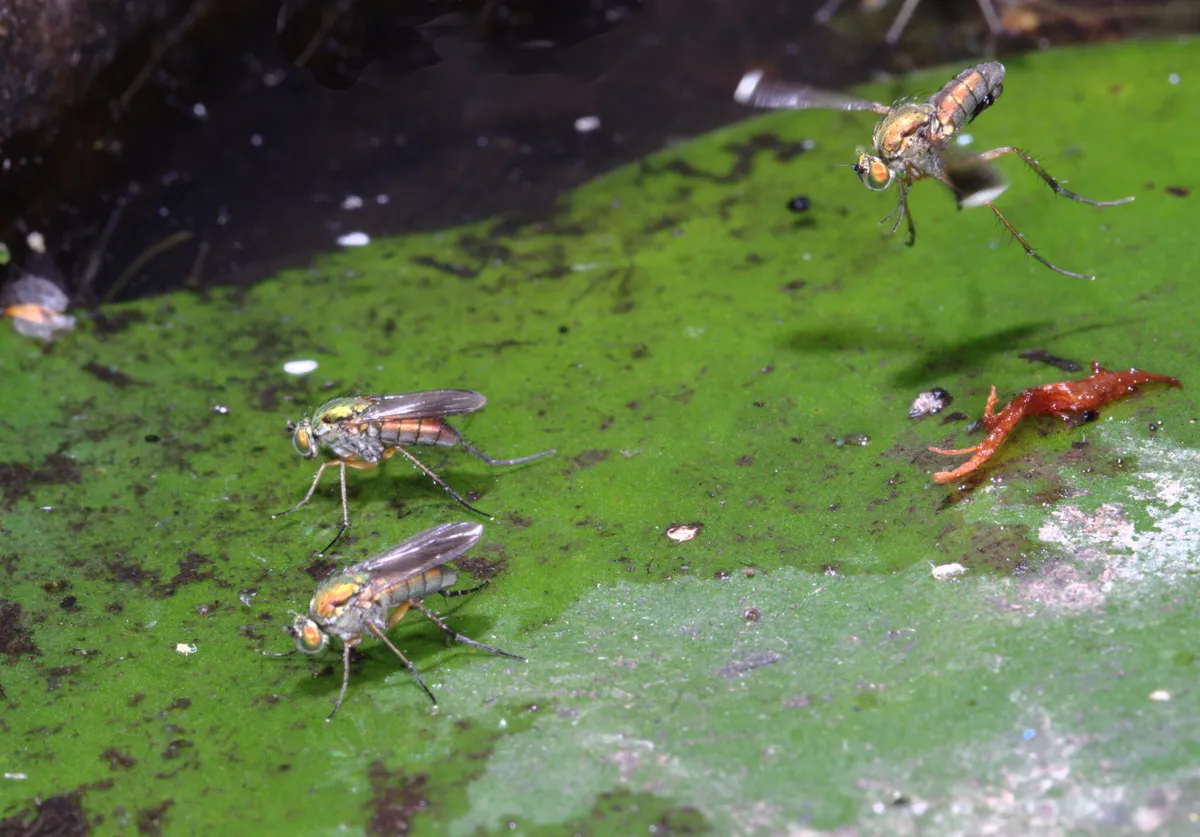I told a friend I was writing an identification guide to dolichopodids. "To what?" he asked. So I waved my arms around mimicking the courtship dance of the most conspicuous of this large family of bottle-green flies.
"Oh, you mean semaphore flies," he says.
What are semaphore flies?
This species is one of over 300 species of Dolichopodidae in the UK, a large and conspicuous family. Most species are distinctly metallic and often the males are adorned with secondary features used for courtship.
This species is notable for the white tips at the end of their wings which play a vital part in the males wooing strategy, and makes it very easy for us to identify the species.
This is a common fly in the southern half of England but rapidly peters out in the north and is clearly at the edge of its geographic range here. It has been recently found in Scotland – almost certainly yet another indication of climatic warming since the fly is far too conspicuous to have been overlooked. The same northern expansion has also been noted in Sweden.
Males and females congregate at puddles and ponds. Many of you will have seen these humming masses of flies bobbing about apparently aimlessly. But is far from aimless.

How do semaphore flies mate?
The males have congregated to find a mate, and the less conspicuous females are also milling about, feeding on tiny worms, midge larvae and water fleas in the water film over the mud.
As in all courtship rituals, the aim is to impress the female and so the male, must be fitter in the Darwinian sense than his rivals. The male of the semaphore fly does this by showing-off in a little dance.
The male picks out his amour, and starts with the short bursts of wing-vibrating lasting a fraction of a second, where the white tip stands out conspicuously from rest of the darker wing. He then usually hovers briefly in front of her before starting the acrobatic display flight.
Like a little helicopter, he makes an arc over the female, about 8cm long and just above her, back and forth. Half-way through the arc, he flips so he finishes still facing her, and still airborne.
There’s a slow and a fast version, not easy to distinguish in the field, but by carefully following the dance on film, it is estimated that he’s flying at 0.6m/s (about walking pace to a human 1000 times longer than the fly), having reached this speed in about 3cm.
The 180 flip is at an angular speed of 4500 per second – compare that with turning your head quickly (without hurting yourself) of perhaps 400 per second. The semaphore fly’s turn is among the fastest known in among animals, and it is certainly impossible to see when watching them.

After this super-fly effort, and super-human effort in studying them, the odd thing is that scarcely any matings have been seen. Are females just ultra-fussy? But the fly is abundant so something must happen.
Where their larvae develop is unknown but it cannot be at the courtship sites as some of these are just puddles or concrete ornamental ponds.
What do semaphore flies eat?
Like all adult dolichopodids, semaphore flies are generalist predators. Their spindly legs are not used to catch prey, but a soft worm or even an armoured water flea is quickly crushed by the massive mouthparts of the females.
You can see them doing this, often tugging on a worm like a blackbird.
All these observations and records can help us understand more about this and related species. There is a recording scheme – Empididae, Hybotidae and Dolichopodidae Scheme – that gives further information about Dolichopodids and their relatives and how you can add to the knowledge that we have on this and other species of Doli.
So do find a puddle of these flies in midsummer, sit back and enjoy watching the sex and violence!